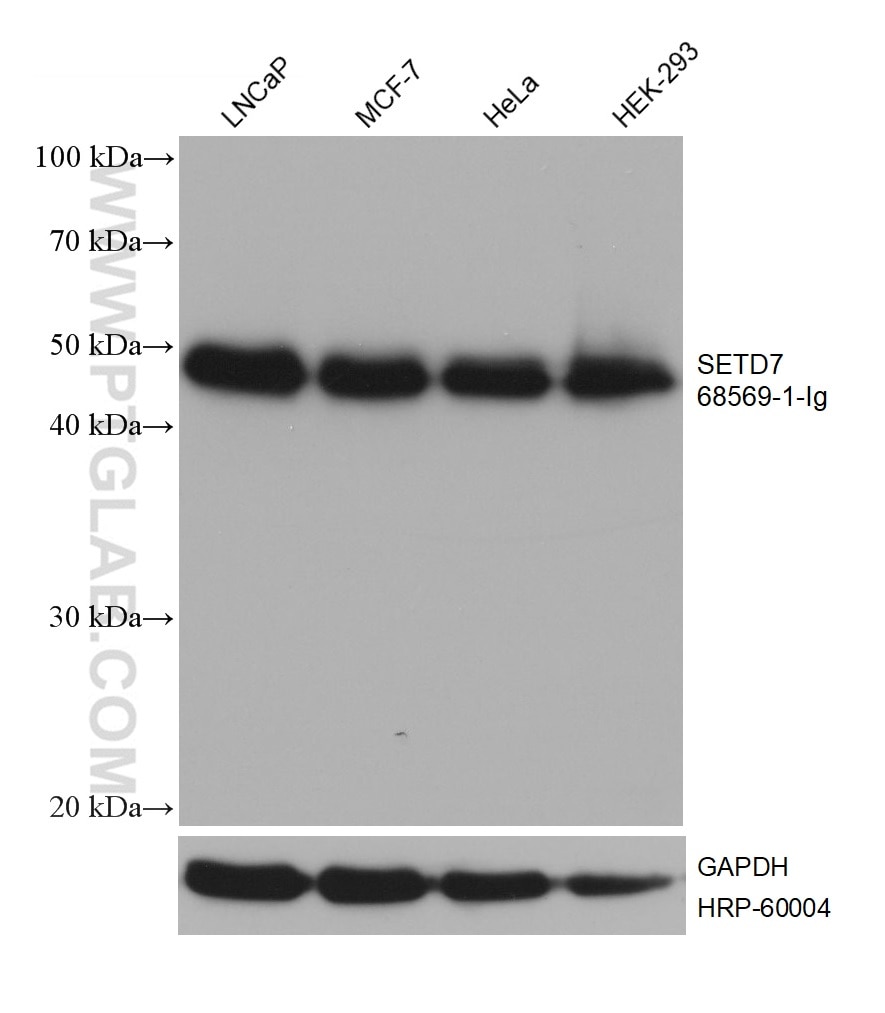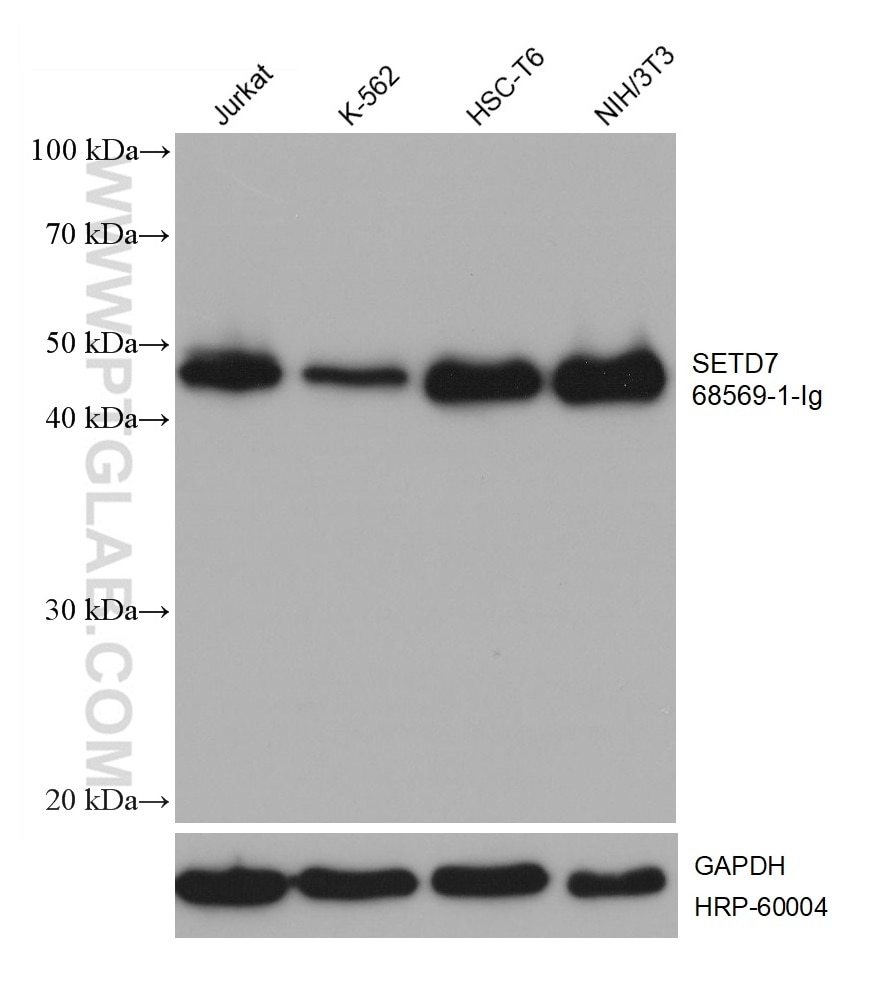Tested Applications
| Positive WB detected in | LNCaP cells, Jurkat cells, MCF-7 cells, HeLa cells, HEK-293 cells, K-562 cells, HSC-T6 cells, NIH/3T3 cells |
Recommended dilution
| Application | Dilution |
|---|---|
| Western Blot (WB) | WB : 1:5000-1:50000 |
| It is recommended that this reagent should be titrated in each testing system to obtain optimal results. | |
| Sample-dependent, Check data in validation data gallery. | |
Product Information
68569-1-Ig targets SETD7 in WB, ELISA applications and shows reactivity with Human, mouse, rat samples.
| Tested Reactivity | Human, mouse, rat |
| Host / Isotype | Mouse / IgG1 |
| Class | Monoclonal |
| Type | Antibody |
| Immunogen |
CatNo: Ag33803 Product name: Recombinant human SETD7 protein Source: e coli.-derived, PET28a Tag: 6*His Domain: 1-366 aa of BC121055 Sequence: MDSDDEMVEEAVEGHLDDDGLPHGFCTVTYSSTDRFEGNFVHGEKNGRGKFFFFDGSTLEGYYVDDALQGQGVYTYEDGGVLQGTYVDGELNGPAQEYDTDGRLIFKGQYKDNIRHGVCWIYYPDGGSLVGEVNEDGEMTGEKIAYVYPDERTALYGKFIDGEMIEGKLATLMSTEEGRPHFELMPGNSVYHFDKSTSSCISTNALLPDPYESERVYVAESLISSAGEGLFSKVAVGPNTVMSFYNGVRITHQEVDSRDWALNGNTLSLDEETVIDVPEPYNHVSKYCASLGHKANHSFTPNCIYDMFVHPRFGPIKCIRTLRAVEADEELTVAYGYDHSPPGKSGPEAPEWYQVELKAFQATQQK Predict reactive species |
| Full Name | SET domain containing (lysine methyltransferase) 7 |
| Calculated Molecular Weight | 366 aa, 41 kDa |
| Observed Molecular Weight | 48-50 kDa |
| GenBank Accession Number | BC121055 |
| Gene Symbol | SETD7 |
| Gene ID (NCBI) | 80854 |
| RRID | AB_3085271 |
| Conjugate | Unconjugated |
| Form | Liquid |
| Purification Method | Protein G purification |
| UNIPROT ID | Q8WTS6 |
| Storage Buffer | PBS with 0.02% sodium azide and 50% glycerol, pH 7.3. |
| Storage Conditions | Store at -20°C. Stable for one year after shipment. Aliquoting is unnecessary for -20oC storage. 20ul sizes contain 0.1% BSA. |
Background Information
SET domain containing lysine methyltransferase 7 (SETD7, also called SET7/9) was the first lysine methyltransferase (KMT) discovered to specifically monomethylate lysine-4 of histone 3 (H3K4me1) (PMID: 26435321). SETD7 has been shown to have a very broad target specificity in vitro, including transcriptional regulators such as TAF10, p53, ER, p65, STAT3, Rb, Mypt, Tat, and Foxo3 (PMID: 25136132, 30013796).
Protocols
| Product Specific Protocols | |
|---|---|
| WB protocol for SETD7 antibody 68569-1-Ig | Download protocol |
| Standard Protocols | |
|---|---|
| Click here to view our Standard Protocols |






